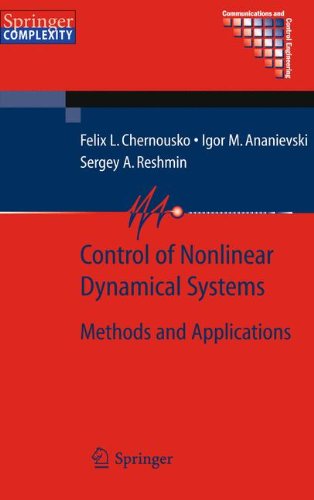

Most ebook files are in PDF format, so you can easily read them using various software such as Foxit Reader or directly on the Google Chrome browser.
Some ebook files are released by publishers in other formats such as .awz, .mobi, .epub, .fb2, etc. You may need to install specific software to read these formats on mobile/PC, such as Calibre.
Please read the tutorial at this link: https://ebookbell.com/faq
We offer FREE conversion to the popular formats you request; however, this may take some time. Therefore, right after payment, please email us, and we will try to provide the service as quickly as possible.
For some exceptional file formats or broken links (if any), please refrain from opening any disputes. Instead, email us first, and we will try to assist within a maximum of 6 hours.
EbookBell Team

4.1
20 reviewsThis book is devoted to new methods of control for complex dynamical systems and deals with nonlinear control systems having several degrees of freedom, subjected to unknown disturbances, and containing uncertain parameters. Various constraints are imposed on control inputs and state variables or their combinations. The book contains an introduction to the theory of optimal control and the theory of stability of motion, and also a description of some known methods based on these theories.
Major attention is given to new methods of control developed by the authors over the last 15 years. Mechanical and electromechanical systems described by nonlinear Lagrange’s equations are considered. General methods are proposed for an effective construction of the required control, often in an explicit form. The book contains various techniques including the decomposition of nonlinear control systems with many degrees of freedom, piece-wise linear feedback control based on Lyapunov’s functions, methods which elaborate and extend the approaches of the conventional control theory, optimal control, differential games, and the theory of stability. The distinctive feature of the methods developed in the book is that the controls obtained satisfy the imposed constraints and steer the dynamical system to a prescribed terminal state in finite time. Explicit upper estimates for the time of the process are given. In all cases, the control algorithms and the estimates obtained are strictly proven.
The methods are illustrated by a number of control problems for various engineering systems: robotic manipulators, pendular systems, electromechanical systems, electric motors, multibody systems with dry friction, etc. The efficiency of the proposed approaches is demonstrated by computer simulations. The authors hope that the monograph will be a useful contribution to the scientific literature on the theory and methods of control for dynamical systems. The book could be of interest for scientists and engineers in the field of applied mathematics, mechanics, theory of control and its applications, and also for students and postgraduates.